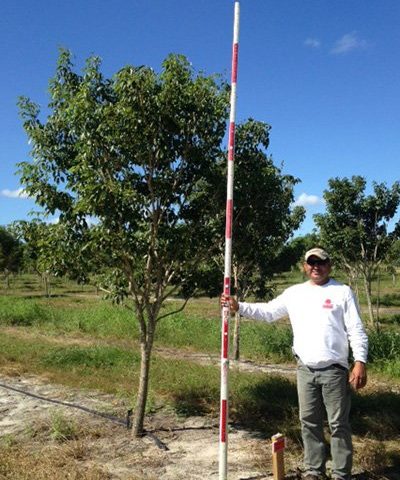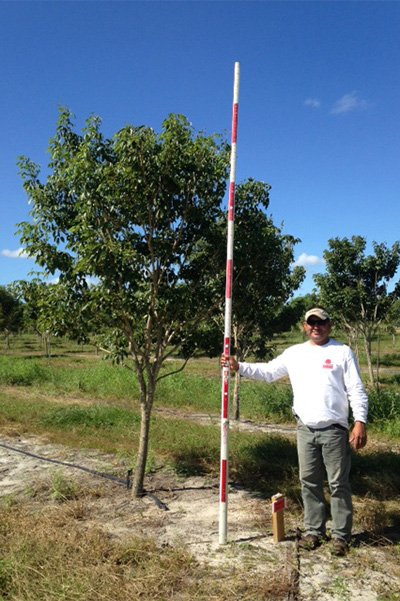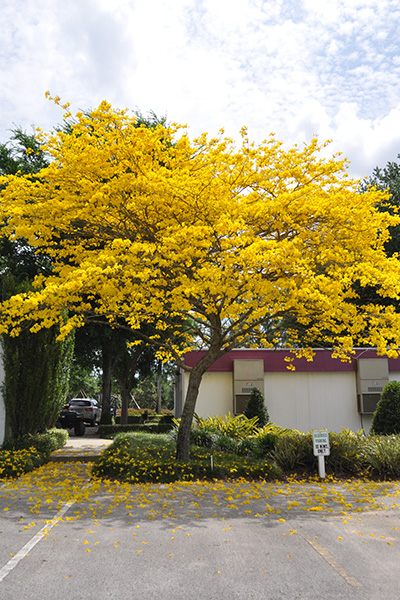Trumpet Tree

Field Grown Tabebuia
Tabebuia caraiba
Tabebuia, more commonly known as the “Trumpet Tree,” is a flamboyantly ornamental tree native to Brazil and South America. The name Trumpet Tree comes from its blooms, which hang in clusters, are tubular, and open up with multiple stamens. Each spring, Trumpet Trees erupt with flowers, which last for a few days at a time. These blooms can be pink, purple, or yellow depending on the variety. In the winter, seed pods, about 5 to 10 inches long, dangle from the branches providing a winter interest.
Trumpet trees prefer full sun, but can thrive in partial shade. They can be successfully planted in most soil types, as long as the land is well drained. They have a significant tolerance to drought once they have been established. Most specimens can tolerate a light frost, but Trumpet Trees are a tropical plant that can be damaged by a hard freeze.
Tabebuia can create a striking impact with just a single tree. They can also be planted to form a decorative archway or used as an accent tree. Their twisting branches and silvery leaves create an appealing shade tree, plus the additional benefit of annual explosions of color.

Ornamental Characteristics:
Native Origin:
South America
Common Names:
Tabebuia, Trumpet Tree, Tree of Old
Description:
Hardy Range: 10A to 11
Mature Height: 15 to 25’
Mature Spread: 10 to 15’
Growth Rate: moderate
Form: rounded
Persistence: semi – Evergreen
Ornamental Characteristics:
Gold and silver tabebuia produce bright yellow-gold flowers and are distinguished by their warm- or cool-toned bark. Pink and purple tabebuia produce vibrant pink and purple flowers, respectively, and have a silvery bark.
Environment:
Soil: clay; sand; loam; acidic; alkaline; well-drained
Salt: moderate
Exposure: full sun or partial shade



